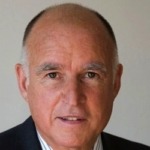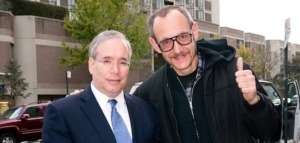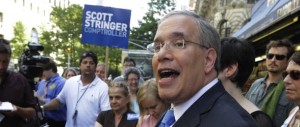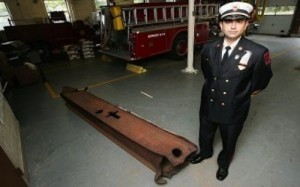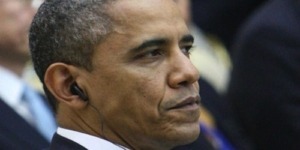KENNETH D. WHITEHEAD
Russell Shaw, American Church: The Remarkable Rise, Meteoric Fall, and Uncertain Future of Catholicism in America (San Francisco: Ignatius Press, 2013).
This new book of Russell Shaw’s on the “American Church” is the best available current account that you are likely to find describing what the Catholic Church in America has become today and where she stands. It is readable, fast-paced, and accurately sourced. The author writes from a solidly orthodox standpoint; he believes the faith and loves the Church; and he is also quite knowledgeable about his chosen subject, occasionally even adding an insider’s revelation (he was in charge of media relations for the American Catholic bishops for 18 years). Although he is quite critical of some recent trends in the Catholic Church in America today, as the title of his book indicates, he is most distinctly not one of those carping liberal critics who thinks that the Church has got to “change” in order “to keep up with the times.”
Quite the contrary. He sees and views with no little alarm some of the results of the “Americanization” of Catholicism which has brought with it widespread attitudes and practices by some American Catholics that are simply incompatible with traditional and authentic Catholic belief and practice. In becoming assimilated to American life and society—in striving to prove that “good Catholics” could indeed be “good Americans”—many American Catholics have ended up buying into some American practices and attitudes that diverge, sometimes sharply, from what the Church continues to teach and enjoin.
From Catholic politicians who say they are “personally opposed” to abortion, but who nevertheless publicly promote it, to the Catholic married couples who employ forbidden birth control methods, these Catholics are actually demonstrating that Americanization has not resulted in maintaining their Catholic faith and practice. While there was a time when it could be argued that American democracy was for the most part quite compatible with true Catholicism, today’s galloping decadence and moral decline—Shaw calls it “toxic”—render increasingly difficult, if not impossible, the notion that today’s brand of “Americanism” can be considered compatible with authentic Catholicism.
But the author’s concern for the Church in America is not confined to the contemporary scene. He goes back to the beginnings of the Church in this country and shows how the successive waves of Catholic immigrants to these shores from Ireland, Germany, and later from Italy and Eastern Europe, brought about the “remarkable rise” of Catholicism in what was originally almost entirely a Protestant America. This rise was remarkable, and yet the bishops and the religious orders of the day largely succeeded in keeping the large number of Catholics who arrived in this country as loyal sons and daughters of the Church. At the same time, this same leadership saw the absence of any state religion in the United States as an opportunity for the advancement of Catholicism. Such figures as Father Isaac Hecker, founder of the Paulist Fathers, actually thought America was ripe for conversion to Catholicism.
This hope and estimate proved to be overly optimistic (as the author shows, the “public intellec- tual” and convert, Orestes Brownson, realized this at the time). In chronicling the establishment of a flourishing Catholicism in America, however, Shaw focuses on the career of James Cardinal Gibbons. The archbishop of Baltimore from 1877 until his death in 1921, Gibbons was the principal leader of the American bishops who successfully advocated assimilation to the American way. Catholics need to know this history if they are to understand the Church today, and Shaw has provided a convenient and accurate summary of its main features.
A major theme of Shaw’s book, in fact, deals with what he calls the “Gibbons Legacy.” Indeed, references to this phrase by both the author and by Philadelphia Archbishop Charles J. Chaput, O.F.M. Cap., in the latter’s introduction, suggest that it was the original title of the book. However that may be, Shaw’s treatment of Cardinal Gibbons, and of episcopal colleagues of his such as the archbishop of St. Paul, John Ireland, results in a ready and understandable explanation of how the Church in America developed.
Throughout his narrative, the author is also conscious of how the Church in America is related to the universal Church, and he provides a brief but clear account of such little understood issues as the so-called “Americanist heresy.” Noting how Pope Leo XIII in his Testem Benevolentiae of 1899 judged that what the pope styled “Americanism” was unacceptable from a true Catholic standpoint, Shaw shows how the seeds of today’s liberal Catholicism and dissent from Catholic teaching were already present in the original drive for Americanization and assimilation to American culture. That this American culture would eventually become transformed into the secularist, materialist, and relativist system which we see today—and which plainly diverges from anything acceptable to Catholic orthodoxy—was something that Leo XIII feared all along, but which the American bishops of the Gibbons type apparently did not see or anticipate. Meanwhile, however, American Catholics allowed to go by the board, and even sometimes dismantled, many of the Church structures and practices that had traditionally buttressed the faith and practice of Catholics.
In illustrating what in his title he calls the “meteoric fall” of the Church in America, Shaw correctly cites the spectacular drops in Mass attendance and other sacramental participation. Similarly, he takes note of the mass defections of priests and religious that followed Vatican Council II, and the large numbers of the laity that have strayed. No less than 22 million Catholics have left the Church—one in three of those who were once Catholic. Ex-Catholics constitute the second largest “denomination” in America after the Catholic community itself!
Among other polls, Shaw instances the 2011 survey which found that even among Catholics who describe themselves as “highly committed” to the Church, some 49 percent say it is possible to be a “good Catholic” while deliberately missing Mass on Sundays; 60 percent disagree with the Church’s teaching forbidding birth control; 46 percent dissent from the teaching against divorce and remarriage; and even 31 percent disagree with the Church’s firm teaching against abortion. The author cites yet other polls in the same vein, and this, along with not a little anecdotal evidence that he mentions in passing, perhaps understandably, leads to the conclusion that the future of the Church in America is “uncertain.”
And certainly, there is the added fact that a majority of American Catholics voted for the radically pro-abortion Barack Obama, while America’s premier Catholic institution of higher education, the University of Notre Dame, actually awarded this same pro-abortion president an honorary degree, thereby going directly against the announced position of the American bishops that Catholic institutions should not honor those who speak and act against Catholic teaching.
Following the massive public dissent from Pope Paul VI’s 1968 encyclical Humanae Vitae by Catholic theologians—and the equally massive shift in the behavior of the Catholic laity in the 1960s and 1970s—it seemed that “some form of ‘liberal’ or ‘progressive’ Catholicism, freed from (or, more neutrally, disengaged from) the philosophical and theological underpinnings of the past, would emerge as the ‘serious’ Catholicism of the future.” This did seem to be the case to many observers, and not a few of them apparently continue to believe pretty much the same thing today. On the basis of the facts, arguments, and statistics adduced by Shaw, then, it is not easy to dismiss out of hand his conclusion that the future of the Catholic Church in America is indeed “uncertain.”
Students of Catholic history, however, aware of the Catholic Church’s well-known and often-demonstrated ability to revive after periods of decline, and like the phoenix bird to rise again out of the ashes, have in very recent years been able to point to many signs of revival. The pontificates of both Blessed John Paul II and Benedict XVI have been particularly positive in helping to inspire such a revival. For example, the issuance of the Catechism of the Catholic Church in the early 1990s, along with the revision of the Roman Missal later in the same decade, as well as the new English liturgical translations, have been particularly influential in helping restore both authenticity and greater stability to contemporary Catholic faith and practice in the United States. In other words, there is hope. The pontificate of Pope Francis seems to be shaping up in the same way. The Catholic Church is, after all, still the true Church of Christ, who promised to be with her “always”(Mt 28:20).
Shaw mentions some of the signs of this revival. They include: new Catholic schools and colleges that are truly Catholic; reversion to a more authentic Catholic character by some of the older institutions that had gone astray; new media ventures such as EWTN and Catholic radio; new periodicals and publishers, as well as the new Catholic Internet; new orders, institutes, and organizations promoting Catholic spirituality, causes such as the pro-life and pro-family movements; the appearance of a new generation of gung-ho “John Paul II priests”; and, above all, bishops standing up to the current secularist juggernaut in areas such as healthcare, marriage, and the like. The response of the Catholic people generally to the bishops’ call for resistance to the HHS mandate is particularly noteworthy.
There are signs, then, that the Catholic Church in America does have a future. This future no doubt remains “uncertain,” as Shaw contends. But there are also many grounds for hope. Shaw’s book, American Church, is thus eminently worth reading: it allows us to see where we have been and where we are. Where we are going is still in God’s hands—and in ours!
Kenneth D. Whitehead, author of a number of books, notably One, Holy, Catholic and Apostolic: The Early Church Was the Catholic Church (Ignatius Press, 2000), is a member of the board of directors of the Catholic League.
Russell Shaw serves on the board of advisors of the Catholic League, and is the author of numerous books and articles.
